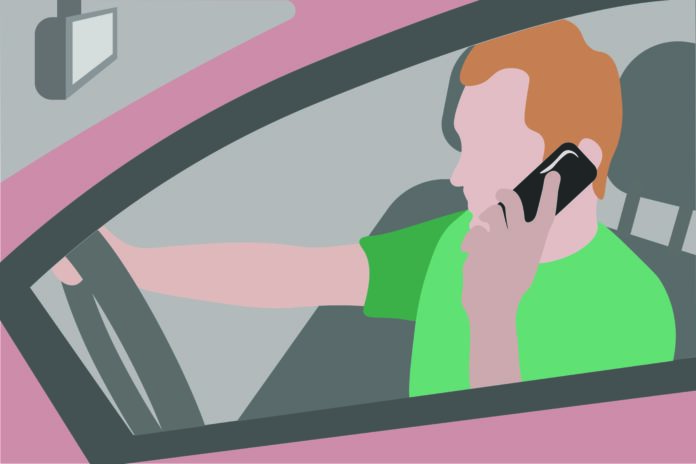Study conducted at California State University, Fresno showed more drivers behind the wheel using phones
In a 2018 report, the California Office of Traffic Safety found that cell phone usage behind the wheel had gone up since 2017, but down compared to the percentage of that in 2016. California State University, Fresno helped conduct the study between August and September of 2018, and discovered that 4.52 percent of drivers in California were spotted using or picking up their phone while driving. In 2017, 3.48 percent were seen utilizing their devices, resulting in over a 1 percent increase between 2017 and 2018.
“When it comes to distracted driving, social norms are changing,” said Tim Weisberg, the public information officer for the Office of Traffic Safety. “Like carpool violators, tailgaters, speeders and drivers who are under the influence, drivers are also frowned upon when others see them on their phones. Having said that, I think many drivers still believe they can handle sending or reading a text, punching in directions, you name it, themselves.”
Before the most recent cell phone law, the study concluded that 7.6 percent of California drivers in 2016 could be on their mobile device while operating a vehicle. With many laws being implemented and tickets being threatened for those who break these laws, this percentage has been cut nearly in half.
“It’s hard to pinpoint the exact cause, but we do know that drivers are using their phones in more dangerous ways,” Weisburg said. “Instead of holding the phone to their ear or talking on speakerphone, they are more likely texting, emailing, scrolling through social media or performing another function on the phone that does not involve calling someone. These are all actions that take their eyes off the road.”
In 2016, the results of the study exemplified the need for a new law. The 2017 hands-free cell phone law does not allow drivers to hold their phone for any reason. This new law led to a huge decrease in the number of drivers found on their phones in 2017.
“We are also so reliant on phones for performing everyday tasks,” Weisburg said. “They allow us to do a lot of things in the palm of our hand. Everything is immediate. In that sense, we are glued to them, making it hard to resist the urge to grab the phone when we shouldn’t, like when we are driving.”
Cell phone laws have now been in effect for over 10 years, and OTS hopes to continuously urge people to stay off their phones.
OTS is not the only group trying to educate drivers on the dangers behind cell phone use behind the wheel. The Parkview Adult and Pediatric Trauma Center has an a more in-depth program on the consequences that follow. The program, called “Don’t Text and Drive!”, serves as a tool to offer a public service campaign against texting and driving. The website offers statistics, help and more in line with their campaign to persuade people to make the choice against texting and driving.
“Nearly everyone, down to new drivers, have a smart phone with access to texting, calling, internet, camera, GPS, etc,” said Lisa Hollister, the director of Don’t Text and Drive! for Trauma and Acute Surgery, via email. “This is vastly different than when only a portion of society had flip-phones. There are no adverse consequences for usage (look at seatbelt usage) and it’s an addiction.”
Drivers today are only allowed to tap or swipe their phone once if needed to disable or start up a specific function such as directions. The phone must also be mounted. If drivers choose not to abide by this law, a $162 ticket will be cited for first-time offenders, and a $285 for second-time offenders.
“I was actually hit by a girl texting and driving while heading home from school,” said Danielle Itani, a second-year communication and psychology major at UC Davis. “I remember how shocking and surreal it was to step out of my car and see the whole back of my car completely destroyed while hers was totaled. Her airbags deployed, and she broke her arm and definitely faced major repercussions. After that traumatizing experience, I cannot even have my phone nearby me while driving.”
OTS found that cell phone use was eight times higher for drivers with no passenger versus a driver with someone else in the car. Another part of the study conducted concluded that cell phone use was much higher on local roads than on freeways.
OTS is urging people to direct their attention to what is ahead of them rather than any screen that could result in a fine or accident. It hopes that the study will inspire drivers to put their phones down.
Written by: Lauren Tropio — city@theaggie.org




